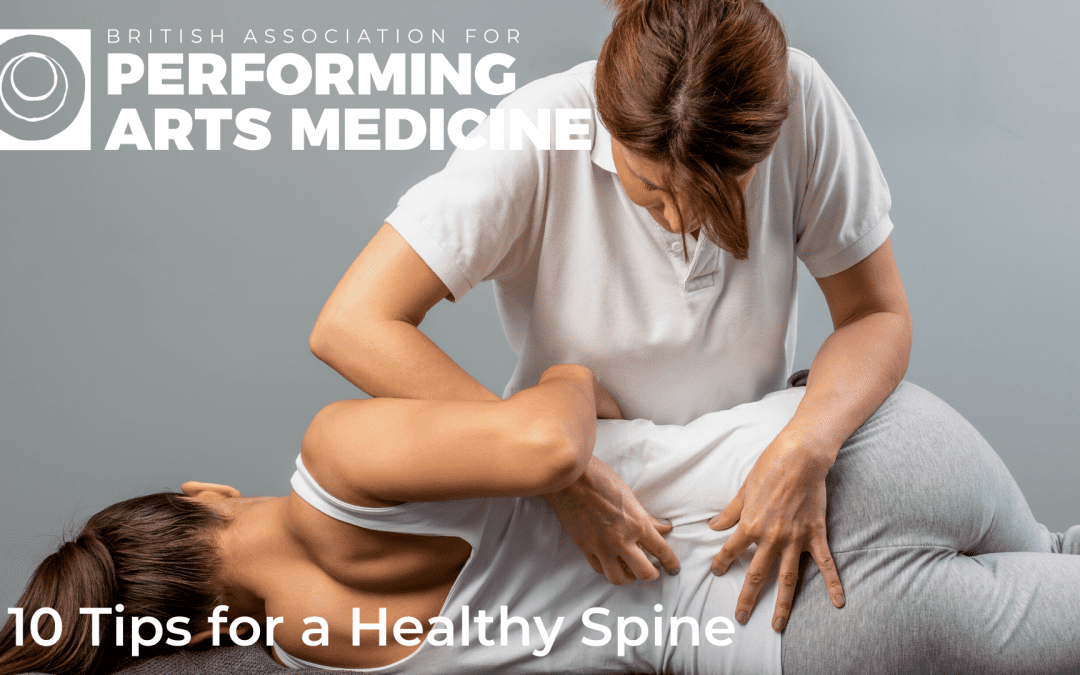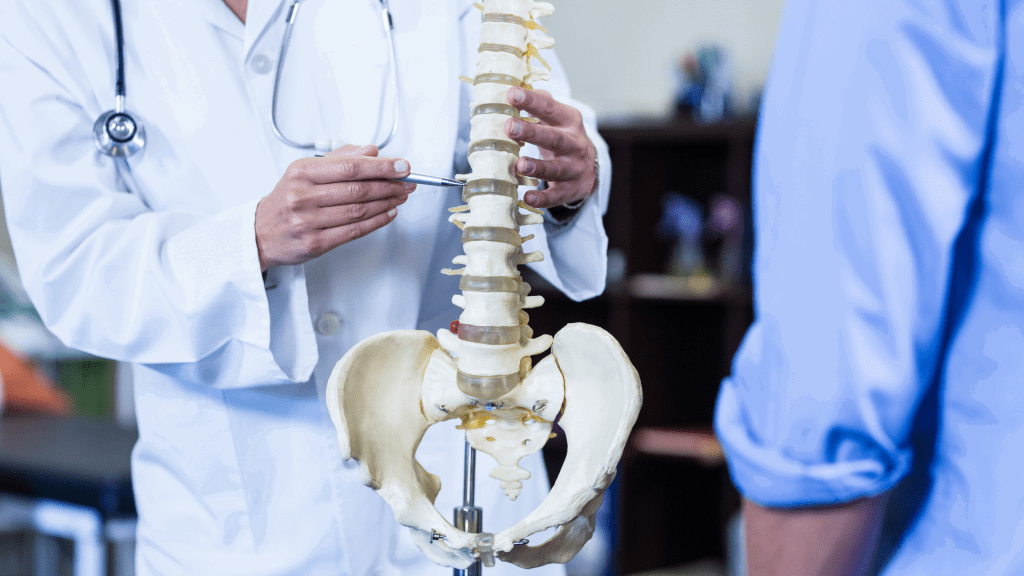BAPAM Flexible Spine – Community Drop In
Sitting for extensive periods of time at our computers and practicing more often now that lockdown restrictions are easing goes hand in hand with putting extra strain on the spine. This may trigger existing problems in the spine or cause new ones. Following an excellent presentation by physiotherapist Lucie Rayner at our Community Drop-in, she has kindly allowed us to share her guide on maintaining a flexible spine.
The Spine
The spine is made up of several bones called ‘vertebrae’ which connect to form a strong but flexible structure. It has gentle curves to absorb forces and reduce strain, with discs between each vertebrae which act as shock absorbers. There are many ligaments, tendons and muscles surrounding the spine which help to move, strengthen and support it. We gradually lose flexibility in the body as we get older. If a lot of flexibility is lost in the spine it can have an impact on the function of our upper and lower limbs. Regular movement and stretching can help reduce age-related decline in flexibility.
Practical Session – Top 10 Exercises for Chair Spine Mobility
Begin in an active sitting position (sitting on ‘sit’ bones, lengthened spine, hands resting on the thighs, visualise head as a helium balloon gently rising towards the ceiling) Disclaimer – if you feel any pain, stop.
- Take 3 deep breaths into the lower ribcage
- Shoulder Rolls – rolling shoulder girdle in both directions
- Single Shoulder Rolls – add some rotation of the spine into this movement – try both directions
- Pelvic Tilts – roll off your sit bones backwards so the spine flexes, roll back onto the sit bones – roll off to the front so the spine extends
- Pelvic Tilt Isolation – see if you can isolate the pelvic tilt so that only the pelvis is moving and the rest of the spine remains lengthened
- Seated Waves – sit with knees wider than the hips, tilt pelvis forwards, fold the body over between the thighs, roll up with a flexed spine. Repeat in fluid movements
- Upper Spine Rotation – fold arms across chest and gently rotate each in direction, repeat with hands on top of shoulders, repeat with arms out straight
- Side Bends – interlink the fingers and stretch arms above head, slowly bend to one side keeping both sit bones weighted on the chair, feet firmly on the floor. Return to centre and repeat on the other side
- Side Stretch – seated with the right leg bent and the left leg straight out to the side, rest right forearm on right thigh, stretch left arm over the head and side bend to the right. Take 3 deep breaths into the left half of the rib cage. Return to centre and repeat on the other side.
- Thoracic Twists – lean forward and anchor your right arm across your thighs, place the back of the left hand in the lower back, slowly lift the left elbow towards the ceiling and follow it with the rest of your body so that the thoracic spine is gently rotating. Return to neutral and repeat a few times. Repeat on the other side. This exercise can also be done with the palm lightly resting behind the head (rather than the lower back)
Top 10 Tips for Maintaining a Healthy Spine
- Change positions regularly: The spine needs movement to maintain health. Try not to stay in one position for long periods and remember the 30:30 rule – move for at least 30 seconds every 30 minutes.
- Spine Flexibility: Include exercises for spine mobility in your pre-practice warm up and cool down to maintain overall flexibility and reduce tension.
https://www.versusarthritis.org/about-arthritis/exercising-with-arthritis/exercises-for-healthy-joints/exercises-for-the-back/ - Keep active: Maintaining general fitness and exercising regularly will help prevent back pain. Include some back-strengthening exercises in your fitness routine.
- Keep hydrated: The intervertebral discs which act as shock absorbers for the spine consist largely of water and can reduce in size if we are de-hydrated. Take regular sips of water throughout the day.
- Good quality sleep is important for a healthy spine as it reduces stress and makes us less vulnerable to back pain triggers. Download the Good Sleep Guide
https://www.csp.org.uk/publications/good-sleep-guide - Manage Stress: Stress and anxiety can increase muscle tension, lower pain tolerance and reduce our resilience. The NHS has useful advice on looking after your mental health.
https://www.nhs.uk/oneyou/every-mind-matters/
- Check your computer set up: Take time to check that your computer or laptop is set up to allow healthy posture and ease of movement. As a general rule, the top of the computer screen should be in line with your eyes and chair height should allow both feet to be firmly on the floor.
https://www.nhs.uk/live-well/healthy-body/how-to-sit-correctly/
- Lifting and carrying: Spread the load evenly across your back by using a rucksack with two straps. If you have to carry a bag with single strap, change the carrying shoulder regularly.
- Back Pain is common: Most people will experience back pain at some point in their lifetime, but is usually a simple sprain or strain and is rarely dangerous. Try these back-pain exercises by the Chartered Society of Physiotherapists
https://www.csp.org.uk/conditions/back-pain/video-exercises-back-pain - Don’t ignore problems: If you are suffering from back pain that is not resolving after 6 weeks, don’t ignore it and seek help from your GP or Physiotherapist. If you experience rare symptoms such as loss of bladder/bowel control; loss of power in your legs; numbness/tingling in the genital or buttock area; feeling unwell with your back pain (e.g., fever, night pain/sweats) then you should consult a doctor immediately.


